РУССКИЕ ХУДОЖНИКИ Степанов Алексей Степанович (1858-1923)
РУССКИЕ ХУДОЖНИКИ Степанов Алексей Степанович (1858-1923)

Скромного, деликатного, доброго А. С. Степанова, "Степочку", как его все звали, любили и ценили друзья - С. В. Иванов, Н. П. Чехов, братья С. А и К А. Коровины, И. И. Левитан, М. В. Нестеров - и многочисленные ученики, среди которых были П. Д. Корин, А А Пластов, Л. В. Туржанский и др. Корин после выставки Степанова говорил: "Словно я Пушкина стихи прочитал. Вот так же просто, просто, а высоко... Что о нем сказать? Художник он был. Вот все тут и сказано. И было в нем все просто, без эффектов. Душа в нем была, и это - самое главное. Но притом артистизм высокий, мастерство несравненное. Сверкающий он при великой своей простоте".
Алексей Степанович Степанов
Степанов очень рано лишился родителей. С семи лет его воспитывал опекун, по настоянию которого юноша в 1879 г. окончил Межевой институт в Москве и приобрел профессию землемера.
Однако работать по этой специальности не стал, а в 1880 г. поступил в МУЖВЗ. Занимался в классе И. М. Прянишникова, учился успешно и в 1884 г. окончил училище с большой серебряной медалью.
«Портрет И.И. Левитана»
Бумага, карандаш. 21.5 x 13.4 см
Национальный художественный музей Республики Беларусь
Во второй половине 1880-х гг. Степанов несколько летних сезонов работал вместе с И. И. Левитаном - сначала под Звенигородом, потом на Волге. Наряду с Левитаном он считается одним из создателей так называемого пейзажа настроения, когда художник не только ищет в природе мотив, соответствующий его внутреннему состоянию, но и психологизируст пейзаж, переносит в него собственные мысли и переживания.
«Осень»
Холст, масло. 54 x 80 см
Кировский областной художественный музей имени В.М. и А.М. Васнецовых
Осень. 1896
Озеро Удомля. 1912
«Зима. Иней»
1900-1910
Холст, масло
Мемориальный музей-усадьба художника Н.А. Ярошенко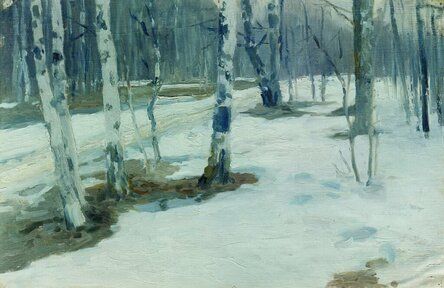
«Зимний пейзаж»
1910
Холст, масло
Бурятский республиканский художественный музей им. Ц.С. Сампилова
«Март»
Холст, масло
Нижегородский художественный музей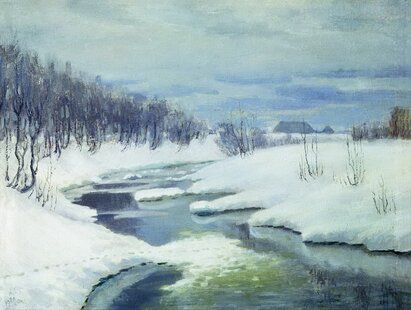
«Оттепель»
1904
Холст, масло. 58.3 x 79 см
Химкинская картинная галерея
«Ранняя весна»
1900-1910
Холст, масло
Волгоградский областной музей изобразительных искусств
«Море»
1923
Холст, масло
Плесский государственный историко-архитектурный и художественный музей-заповедник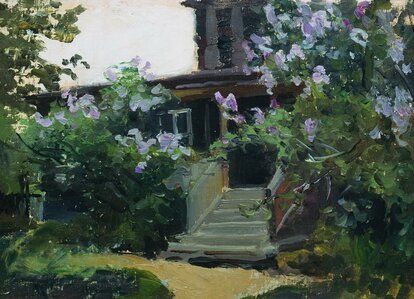
«Беседка под цветами»
Этюд
Холст, масло
Плесский государственный историко-архитектурный и художественный музей-заповедник
В 1905 году Степанов за картину «Утренний привет» удостаивается звания академика Императорской Академии художеств. Картина выставлялась на XXV выставке передвижников, XXIV выставке Императорской Академии художеств и в 1900 году на Всемирной выставке в Париже
«Утренний привет»
1897
Холст, масло 61 х 99
Псковский государственный объединенный историко-архитектурный и художественный музей-заповедник
Работы Степанова носят пленэрный характер, они написаны широко, эскизно, жидким прозрачным мазком, очень мягко, немногими цветами ("Краски поменьше", - советовал он позднее своим ученикам). Степанов любил изображать деревенскую дорогу, по которой крестьянские лошади тащат сани или телеги ("Гусек", 1910-15; "По проселку зимой", "У крылечка", обе 1913- 14; "Уехали", 1914).
«По зимней дорожке»
Картон, акварель
Государственный центральный музей музыкальной культуры им. М.И. Глинки
«Зимний пейзаж»
1910
Холст, масло
Государственная Третьяковская галерея
«Цугом»
1911-17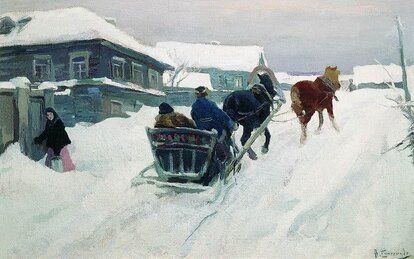
«Глухая провинция»
1900-е
Холст, масло. 62 x 97 см
Госудаpственный Владимиpо-Суздальский истоpико-аpхитектуpный и художественный музей-заповедник
Каждое лето с 1906 года по 1914 год Степанов живёт в имениях Лубенькино, Гарусово и Бережок Вышневолоцкого уезда (ныне Удомельский район) Тверской губернии. Дом, в котором жил Степанов в Гарусово, изображён на картине «Уехали»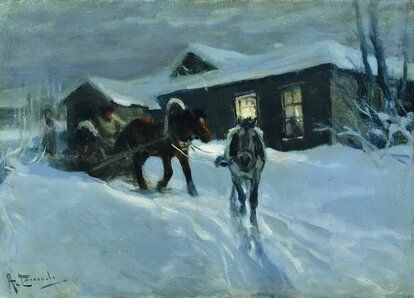
«Уехали»
1914
Холст, масло
Государственная Третьяковская галерея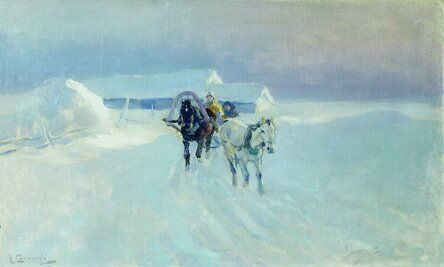
«Зимой»
1900-1910
Холст, масло
Алупкинский государственный дворцово-парковый музей-заповедник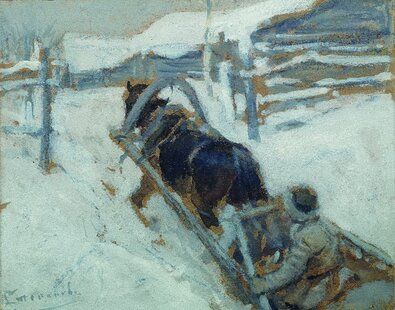
На санях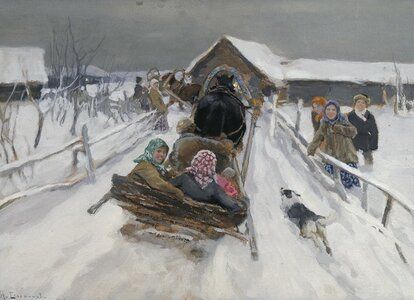
«Катание на Масленицу»
1910
Картон, темпера. 49 x 68 см
Ставропольский краевой музей изобразительных искусств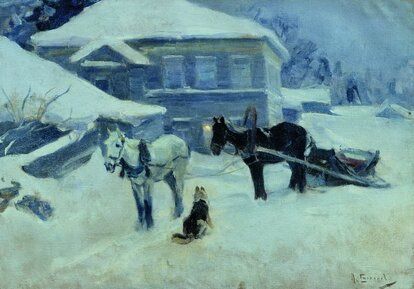
«Постоялый двор»
1912
Холст, масло
Северо-Осетинский республиканский художественный музей им. М.С. Туганова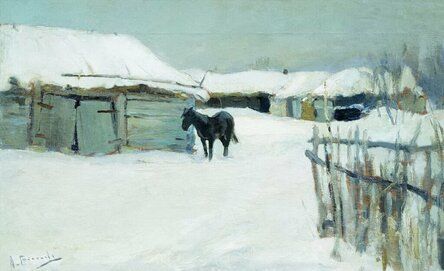
«Деревня зимой»
1900-1910
Холст, масло. 42 x 68 см
Ставропольский краевой музей изобразительных искусств
«На водопой»
1916
Холст, масло
Нижегородский художественный музей
Любил изображать крестьянских детей, наблюдающих окружающий мир - голый, бедный, осенний, но родной и широкий ("Журавли летят", 1891; "Дети на хворосте", 1899; "У околицы", 1915-16).
«Журавли летят»
1891.
Холст, масло 620 х 110
Государственная Третьяковская галерея
Москва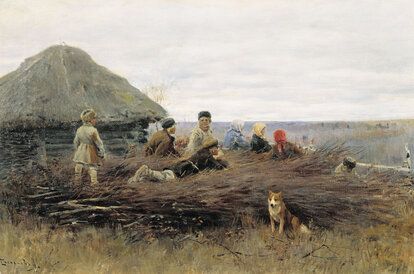
«Дети на хворосте»
1899
Холст, масло. 47.5 x 72 см
Ульяновский художественный музей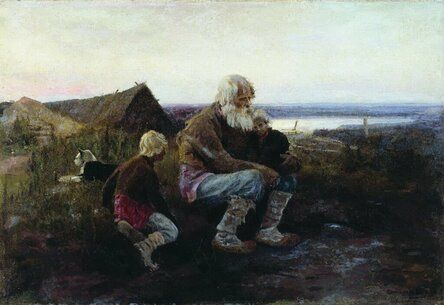
«Вечерняя заря»
Холст, масло
Красноярский художественный музей им. В.И. Сурикова
У ограды
«На террасе»
1900-1910
Холст, масло
Нижегородский художественный музей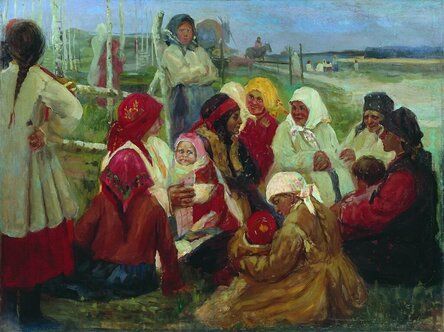
Беседа крестной матери
«Хоровод»
Холст, масло
Бурятский республиканский художественный музей им. Ц.С. Сампилова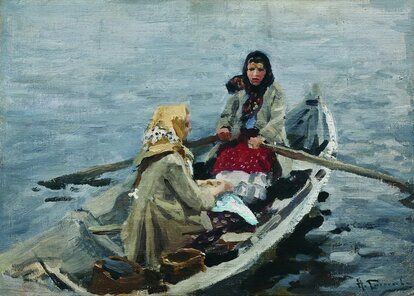
«В лодке»
1900-1910
Холст, масло
Иркутский областной художественный музей им. В.П. Сукачева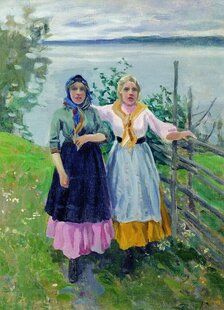
«Подруги»
Холст, масло
Тверская областная картинная галерея
Поездка в Европу, а именно живопись французских импрессионистов, оказала определённое влияние на творчество художника, хотя и отрицаемое современниками. По результатам поездки Степановом написана картина «Прачки в Виши».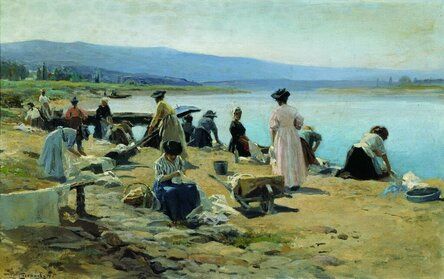
«Прачки в Виши»
1895
Холст, масло. 41 x 55.5 см
Государственная Третьяковская галерея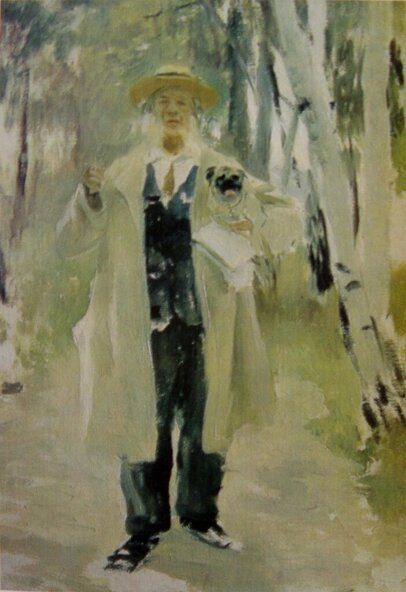
Старая аллея
С увлечением писал охотничьи сцены ("После охоты. Возвращение", 1907; "Убитый лось", 1900-10; "С борзыми", 1910-е; "Увидели", 1917).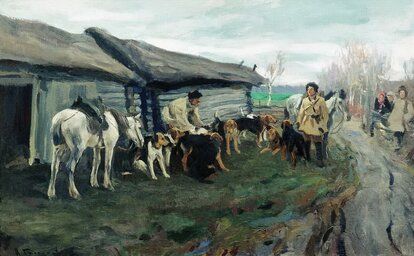
«Сбор на охоту»
1900-е
Холст, масло
Саратовский государственный художественный музей им. А.Н. Радищева
«Охота»
1885
Холст, масло
Мемориальный музей-усадьба художника Н.А. Ярошенко
«После охоты»
1894
Холст, масло 58,5 х 100,3
Государственный музей изобразительных искусств Республики Татарстан
Казань
«По волку с гончими»
1900-1910
Холст, масло. 122.5 x 76 см
Тюменский музей изобразительных искусств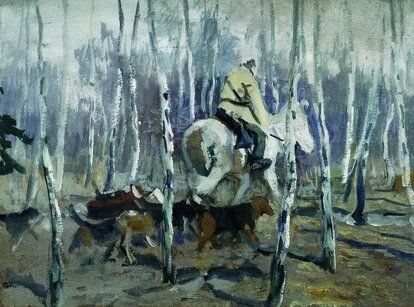
С гончими на охоту. 1900-1910
«Охота с борзыми»
Этюд
Фанера, масло. 36 x 53 см
Иркутский областной художественный музей им. В.П. Сукачева
Степанов любил животных и обладал редким умением передавать их повадки и даже психологию ("Лоси", 1889; "На промысел", 1909; "Лось и лайки", 1910; "Волки ночью", "Волки у плетня", обе 1910-е; "В ожидании обеда", 1910).
«Лоси»
1889
Холст, масло. 47.8 x 80.8 см
Государственная Третьяковская галерея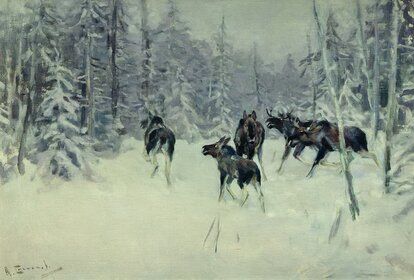
«Лоси»
1919
Холст, масло
Северо-Осетинский республиканский художественный музей им. М.С. Туганова
«Волки ночью»
1910-е.
Волки. 1912-1915
«Волки в зимнем лесу»
1900-1910
Холст, масло
Государственная Третьяковская галерея
«Медведица с медвежатами»
Цветная бумага, гуашь 23 х 33
Частное собрание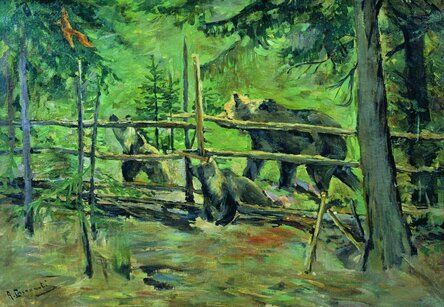
«Медведица с медвежатами»
1919
Холст, масло
Нижнетагильский художественный музей изобразительных искусств
«Лошадь»
1911-1920
Холст, масло
Нижегородский художественный музей
«Лошадка»
1900-1910
Холст, масло
Нижегородский художественный музей
«На пастбище»
Холст, масло
Национальный художественный музей Республики Беларусь
«Коровы на водопое»
1908
Холст, масло. 67 x 80 см
Севастопольский художественный музей им. П.М.Крошицкого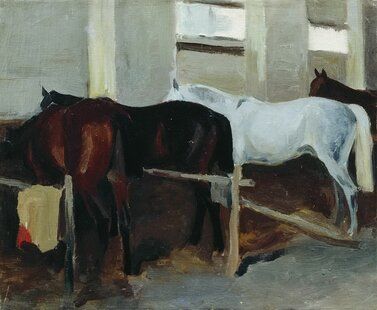
«Стойло»
1910-е
Холст, масло
Плесский государственный историко-архитектурный и художественный музей-заповедник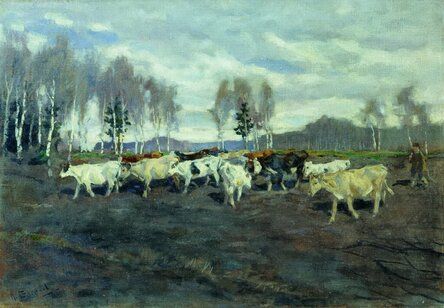
«Стадо»
1910-е
Холст, масло
Таганрогская картинная галерея
«Стадо овец»
1900-е
Холст, масло
Дагестанский музей изобразительных искусств имени П.С. Гамзатовой
«Убитый»
1911-1920
Этюд
Бумага, акварель
Мемориальный музей-усадьба художника Н.А. Ярошенко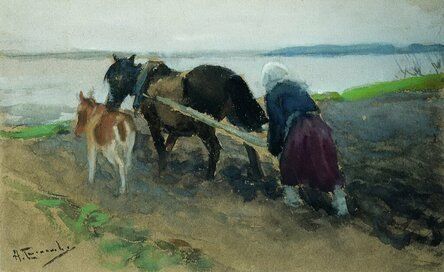
На пашне. 1909 - 1911
«Околица»
1914
Холст, масло
Сумский художественный музей
«Этюд с коровой»
Этюд
Холст, масло
Новокузнецкий художественный музей
Жанр, в котором предпочитал работать художник, можно назвать пейзажно-анималистическим. М. В. Нестеров считал Степанова лучшим анималистом после В. А. Серова. Серов также высоко ценил этот дар художника, потому настоял на приглашении Степанова в качестве преподавателя в МУЖВЗ.
Около двадцати лет (1899- 1918) Степанов руководил там "классом животных". Ученики любили его до обожания. Очень немного известно о личной жизни художника - незадолго до смерти он уничтожил свой архив. Зато весь он - в своих картинах.
«На Волге»
1897
Холст, масло. 55 x 133 см
Самарский художественный музей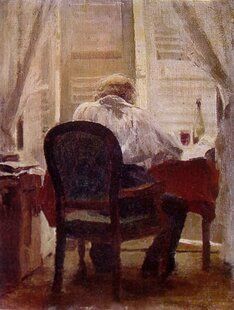
За работой. 1895
Женщина на диване. 1912
«Мужик»
Около 1890
Холст, масло
Плесский государственный историко-архитектурный и художественный музей-заповедник
«Сиреневая аллея»
1900-1910
Холст, масло
Государственный Литературный музей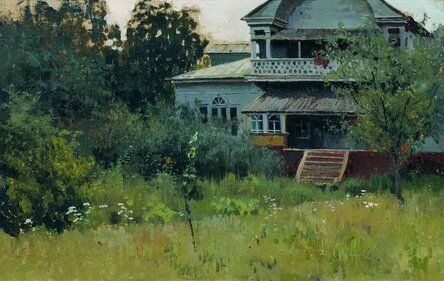
Усадьба летом. 1882
«Усадьба летом»
1882
Холст, масло
Государственная Третьяковская галерея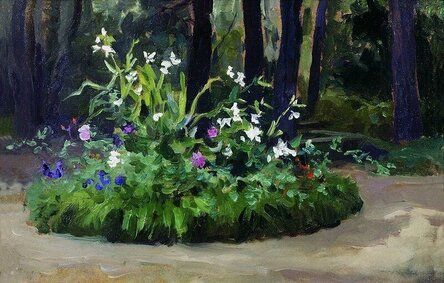
«Клумба в парке»
Картон, масло. 23.3 x 33.7 см
Химкинская картинная галерея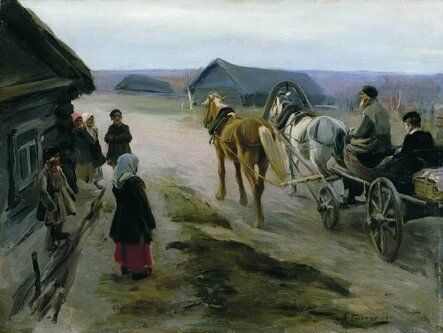
«Приезд учительницы»
1889
Холст, масло. 58.5 x 79 см
Чувашский государственный художественный музей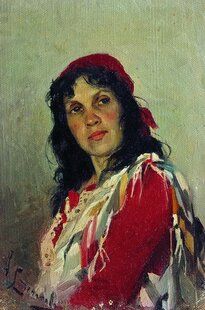
«Портрет С.П. Кувшинниковой»
1888-1889
Холст, масло
Государственный Литературный музей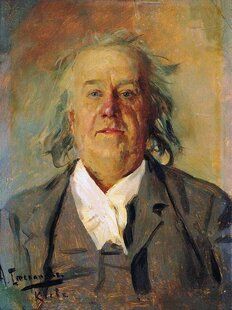
«Портрет Медынцева»
Холст, масло
Тверская областная картинная галерея
Николай Васильевич Медынцев — купец, коллекционер, тесть художника А. С. Степанова, (1902)
«Бульвар»
1919
Бумага, акварель
Национальный художественный музей Республики Беларусь
«Паром»
1919
Холст, масло
Ростовский областной музей изобразительных искусств
Балет. 1908-1909
Особенно интересной становится гуашь Степанова "Grand Opera", исполненная, как кажется на первый взгляд, в настолько явно творчески воспринятой манере импрессионистов, что заставляет впадать в атрибуционную ошибку даже крупных специалистов французского искусства второй половины XIX века. В "Grand Opera" (ок. 1922 г.) свободным движением мазков, неопределенными и в то же время глубокими, хотя и приглушенными, красками, трепетными, неясными и все же характерными силуэтами фигур в сумеречной темноте зрительного зала и тающими в ярком свете сцены воздушными белыми тенями легко проносящихся по сцене балерин Степанов настолько близок к Дега, что заставлял многих относить этот небольшой этюд если не к творчеству самого Дега, то по крайней мере к творчеству одного из художников его круга. М.А. Добров засвидетельствовал восхищение Степанова творчеством Дега, увлечение его мастерским рисунком. Но было бы неправильно видеть в этом этюде слепое подражание французскому импрессионизму. Это - вдохновенное, взволнованное, но все же только практическое упражнение, вызванное свойственным художнику стремлением учиться до конца своих дней. Глубоко, по-настоящему Степанова волновала только русская тема.
Следует внимательно отнестись к высказываниям учеников Степанова, отрицающих наличие импрессионизма в его творчестве (А.П. Панфилов, В.А. Филиппов, Б.Н. Яковлев и другие).
Между живописью импрессионистов и живописью Степанова существует глубокая разница, коренящаяся в самом принципе их искусства. Импрессионист мастерски передает мгновенное впечатление. Но, верное мигу, его произведение теряет что-то от того перманентно совершающегося, что заключается в каждом явлении, в каждой вещи.
Степанов же стремился взять самое существенное, именно то, что дает тон, характер явлению, отбрасывая ненужное, заглядывая с самую сердцевину предмета. За его легкой, быстрой, воздушной живописью много умения, но и много труда.
"Это не импрессионизм, - говорит А.П. Панфилов. - Брал он нежно, но в упор". Оттого в его животных всегда "видна шерстка", хотя трудно представить себе что-либо более далекое от натурализма, чем искусство Степанова.
Годы упорного труда, тысячи натурных наблюдений, кропотливое изучение анатомии животных и наряду со всем этим постижение в художественной практике всех материалов живописи: красок, растворителей, холста, картона, - все это лежит в основе метода Степанова.
Вот почему он не позволял своим ученикам ему подражать. Он знал, что это подражание может быть только внешним и вредным. Он учил видеть, выбирать главное, запоминать; учил упражнять глаз в различении тончайших оттенков тональностей.
Автопортрет. 1922
В 1920 году Степанов тяжело заболел, но продолжал работать. Одну из последних работ Степанова «Качели» (1923) приобрёл для своей коллекции Институт Карнеги. Умер Алексей Степанович Степанов в 1923 году, похоронен на Ваганьковском кладбище.
